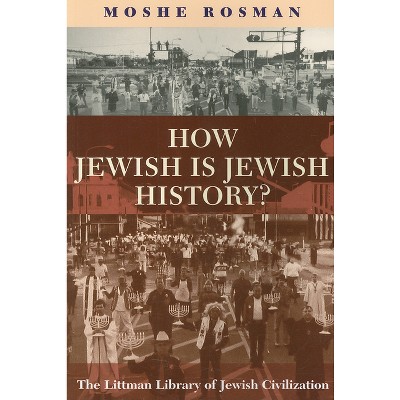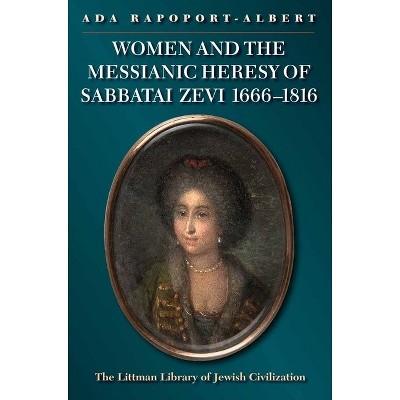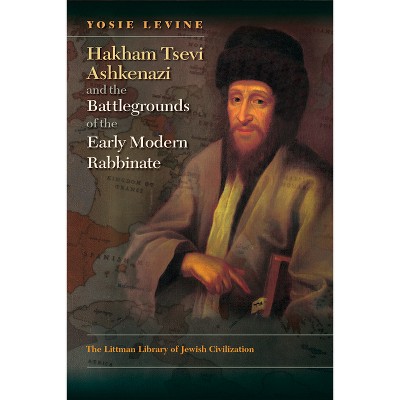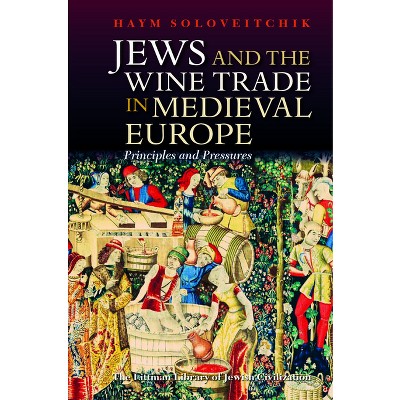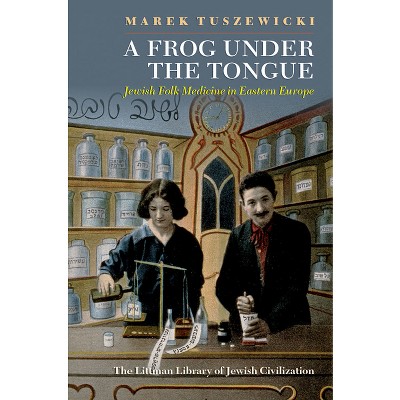Syrian Jewry in Transition, 1840-1880 - (Littman Library of Jewish Civilization) by Yaron Harel (Paperback)

About this item
Highlights
- This pioneering study offers a comprehensive account of Syria's key Jewish communities at an important juncture in their history that also throws light on the broader effects of modernization in the Ottoman empire.The Ottoman reforms of the mid-nineteenth century accelerated the process of opening up Syria up to European travellers and traders, and gave Syria's Jews access to European Jewish communities.
- Author(s): Yaron Harel
- 320 Pages
- History, Jewish
- Series Name: Littman Library of Jewish Civilization
Description
About the Book
A pioneering study of Syria's key Jewish communities, bringing to light an enormous amount of material and providing a broad, multifaceted perspective on Jewish life in Syria.Book Synopsis
This pioneering study offers a comprehensive account of Syria's key Jewish communities at an important juncture in their history that also throws light on the broader effects of modernization in the Ottoman empire.
The Ottoman reforms of the mid-nineteenth century accelerated the process of opening up Syria up to European travellers and traders, and gave Syria's Jews access to European Jewish communities. The resulting influx of Western ideas led to a decline in the traditional economy, with serious consequences for the Jewish occupational structure. It also allowed for the introduction of Western education, through schools run by the Alliance Israélite Universelle, influenced the structure and the administration of Jewish society in Syria, and changed the balance of the relationship between Muslims, Christians, and Jews. Initially Syria's Jewish communities flourished economically and politically in these new circumstances, but there was a developing recognition that their future lay overseas. After the opening of the Suez Canal in 1869, the bankruptcy of the Ottoman empire in 1875, and the suspension of the Ottoman constitution in 1878, this feeling intensified. A process of decline set in that ultimately culminated in large-scale Jewish emigration, first to Egypt and then to the West. From that point on, the future for Syrian Jews lay in the West, not the East.
Detailed and compelling, this book covers Jewish community life, the legal status of Jews in Syria, their relationship with their Muslim and Christian neighbours, and their links with the West. It draws on a wide range of archival material in six languages, including Jewish, Christian Arab, and Muslim Arab sources, Ottoman and European documents, consular reports, travel accounts, and reports from the contemporary press and by emissaries to Syria of the Alliance Israélite Universelle. Rabbinic sources, including the archive of the chief rabbinate in Istanbul, are particularly important in opening a window onto Syrian Jewish life and concerns. Together these sources bring to light an enormous amount of material and provide a broad, multifaceted perspective on the Syrian Jewish community.
The Hebrew edition of the book was the winner of the Ben Zvi Award for Research in Oriental Jewry in 2004.
'For the first time in the historiography of the Jews of Muslim countries we are presented with a rich picture, well written and riveting, of the history of important Jewish communities in the period of the Tanzimat.' From the award citation
Review Quotes
'A work of impressive scholarship, offering new insights into and understanding of the impact of Ottoman reforms on the restructuring of the Syrian Jewish community. The anecdotal material is fascinating and the questioning of old stereotypes is important. It is not a study that will be easily surpassed: it represents many years of serious scholarship and the ability to challenge some old views with new data. It is definitely a book that anyone teaching Middle Eastern Jewry should read and assign to students. Descendants of that community in America should welcome its insights into their history and culture.'
Jane Gerber
Reviews
'A very well-researched and comprehensive survey of one of the lesser-known Jewish Middle Eastern communities.'
Rachel Simon, AJL Newsletter
Abigail Green, English Historical Review, 'Extremely well researched and detailed and will be an invaluable resource for those interested in Syrian Jewry, late Ottoman Syria, and Middle Eastern history more generally.'
Ari Ariel, Syrian Studies Association Newsletter 'A brilliant study of the history of the Jewish communities of Damascus and Aleppo during the nineteenth century. This is a formidable task and Harel admirably rises to the challenge of telling the story . . . employs an impressive array of European and Jewish archival sources from the various rabbinates, as well as records of Jewish organizations such as the Alliance Israélite Universelle, many for the first time . . . a must read for students and academics as well as those more generally interested in the history of the Jewish communities of Syria in modern times.'
Josef Meri, Journal of Modern Jewish Studies FROM REVIEWS OF THE HEBREW EDITION: 'A work to be appreciated not only on its own merits, but also as an example of the kind of research that the Jews of the nineteenth-century Middle East deserve ... I am impressed by the solid base of primary historical sources in which the research is grounded, as well as by the thoroughness and scope of this professional and serious work, which fills the lacuna that existed until now in modern Jewish historical scholarship.'
Zvi Zohar, Zion
Shipping details
Return details
Trending Non-Fiction






